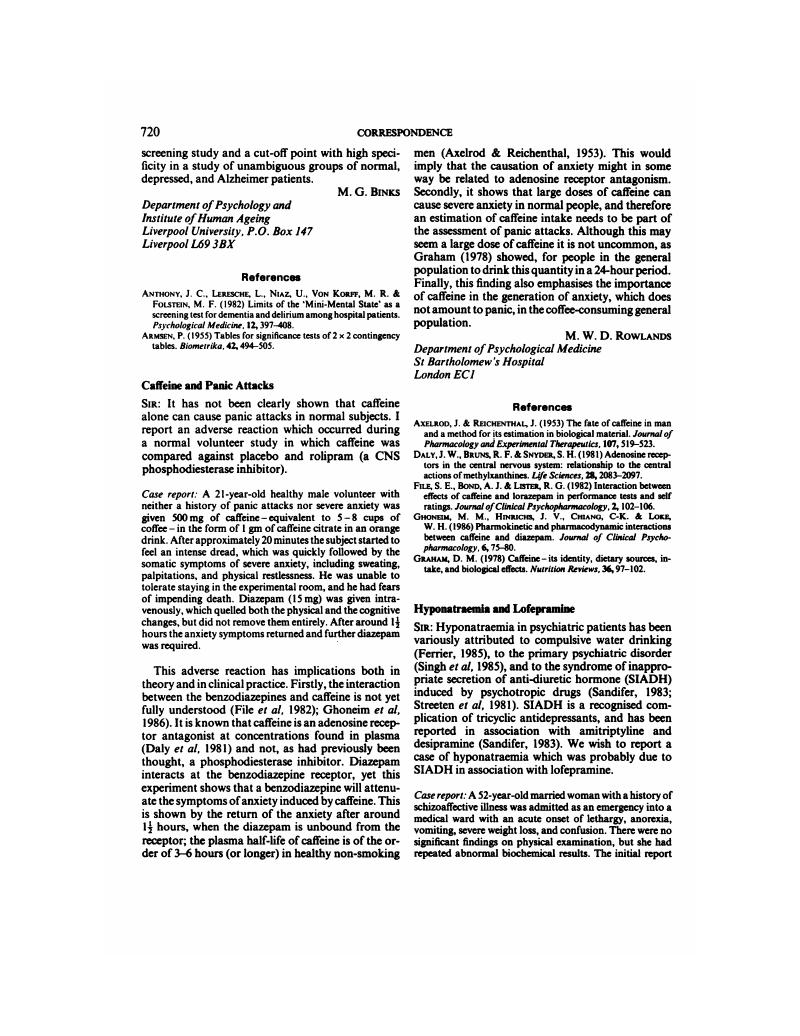Crossref Citations
This article has been cited by the following publications. This list is generated based on data provided by Crossref.
Lammers, W.
1989.
Vol. 13,
Issue. ,
p.
1.
Tondo, Leonardo
and
Rudas, Nereide
1991.
The course of a seasonal bipolar disorder influenced by caffeine.
Journal of Affective Disorders,
Vol. 22,
Issue. 4,
p.
249.
Wise, Laura E.
Premaratne, Ishani D.
Gamage, Thomas F.
Lichtman, Aron H.
Hughes, Larry D.
Harris, Louis S.
and
Aceto, Mario D.
2012.
l-theanine attenuates abstinence signs in morphine-dependent rhesus monkeys and elicits anxiolytic-like activity in mice.
Pharmacology Biochemistry and Behavior,
Vol. 103,
Issue. 2,
p.
245.
2016.
Meyler's Side Effects of Drugs.
p.
7.




eLetters
No eLetters have been published for this article.